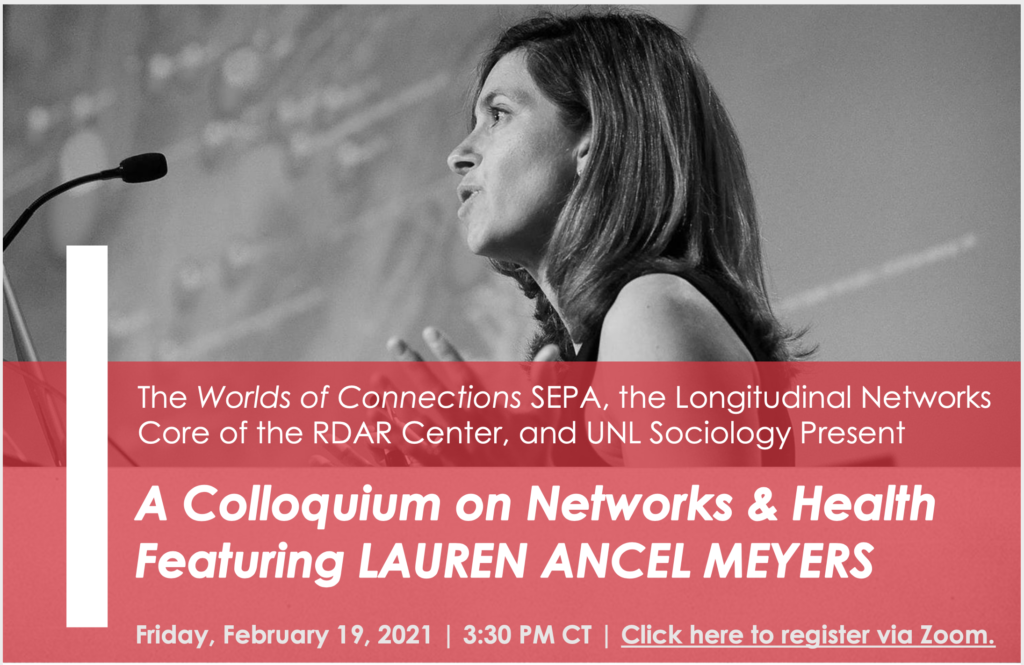Colloquium on Networks and Health Event on February 19
[EDIT from March 4, 2021: The full video recording from the Colloquium featuring Lauren Ancel Meyers is now available on YouTube! Click here to watch the Colloquium.]
Join us at this exciting event! The following event is FREE and OPEN to the public. All are welcome, and there is no charge for this event.
Lauren Ancel Meyers is the Cooley Centennial Professor of Integrative Biology and Statistics & Data Sciences at The University of Texas at Austin and a member of the Santa Fe Institute External Faculty. She was trained as a mathematical biologist at Harvard and Stanford Universities and has been a pioneer in the field of network epidemiology and the application of machine learning to improve outbreak detection, forecasting and control. Professor Meyers leads an interdisciplinary team of scientists, engineers, and public health experts in uncovering the social and biological drivers of epidemics and building practical tools for the CDC and other global health agencies to track and mitigate emerging viral threats, including COVID-19, pandemic influenza, Ebola, HIV, and Zika. Her research has been published in over 100 peer-reviewed articles in major journals and covered by the popular press, including The Wall Street Journal, New York Times, Washington Post, NPR, CNN and the BBC. Professor Meyers was named as one of the top 100 global innovators under age 35 by the MIT Technology Review in 2004 and received the Joseph Lieberman Award for Significant Contributions to Science in 2017.
Click here to view this event on the UNL Sociology Events calendar.
Click here to read more on the UNL Sociology website.
This event is supported by the Worlds of Connections SEPA [1R25GM129836-01], the Department of Sociology, and the Longitudinal Networks Core (LNC) Facility of the Rural Drug Addiction Research (RDAR) Center at the University of Nebraska-Lincoln [P20GM130461]. The WoC SEPA, LNC, and RDAR Center are funded by the National Institute of General Medical Sciences of the National Institutes of Health. This content is solely the responsibility of the authors and does not necessarily represent the official views of the National Institutes of Health or the University of Nebraska.


